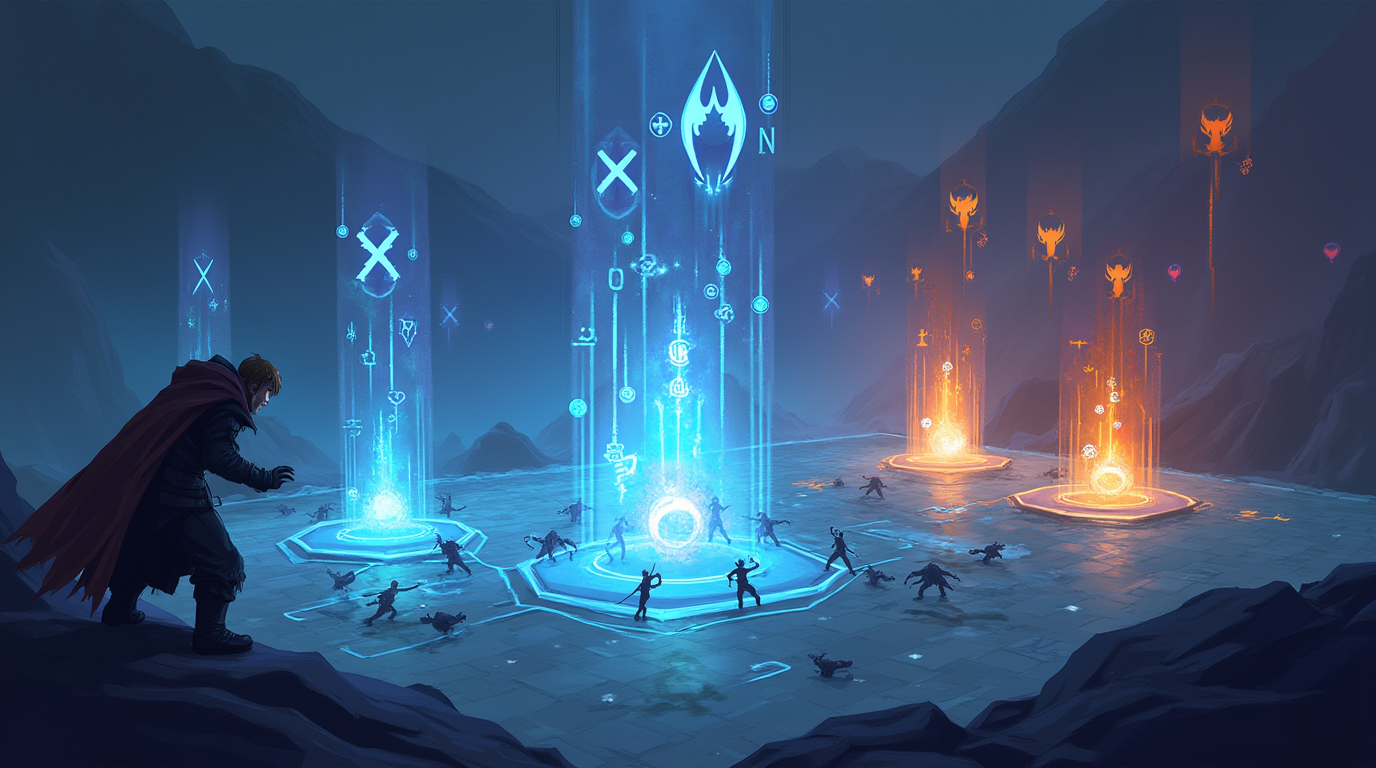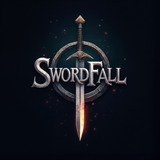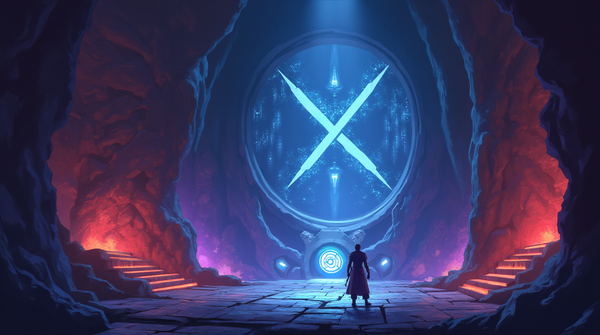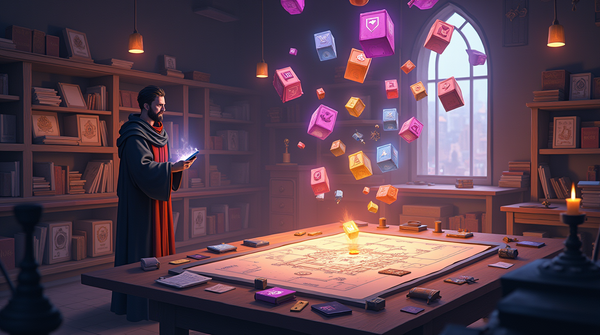How SwordFall’s Ability System Adds Depth to Turn-Based Gameplay

Hello SwordFall enthusiasts!
In today's dev blog, we're digging deeper into what makes each abilities truly special. While we've previously covered the basics of Weapons and Armors, today we'll explore the strategic depth that abilities bring to your matches.
The Anatomy of Abilities
Every abilities in SwordFall comes with unique skills determined by several key factors:
Types & Targets
An ability's Type and Target properties fundamentally define how its skills function in battle:
- Type Classification: Determines what kind of effect the abitity produces (Damage, Healing, Protection, Control, etc.)
- Target Selection: Defines who receives the effect (Single, Area, All Allies, All Enemies, etc.)
For example, a "Frost Nova" might be Type: Control with Target: All Enemies, freezing everyone on the opponent's side for a turn. Meanwhile, "Healing Spring" could be Type: Healing with Target: All Allies, restoring health to your entire team.
Cooldown Mechanics
Cooldowns are the heartbeat of SwordFall's tactical rhythm. More powerful abilities typically have longer cooldowns, forcing you to plan several moves ahead:
- Low Cooldown Abilities (1-2 turns): Your bread-and-butter abilities that maintain pressure
- Medium Cooldown Abilities (3-5 turns): Strong situational plays that can shift momentum
- High Cooldown Abilities (6+ turns): Game-changing ultimates that can reverse a losing position
Mastering the dance of cooldown management separates novice players from veterans. The most successful players track both their own and their opponent's cooldowns, creating openings when powerful enemy abilities are unavailable.
Attributes & Effects
The real depth of SwordFall's ability system comes from the Attributes and Effects systems that modify how skills behave:
Attributes
Attributes apply passive bonuses that enhance an Entity's effectiveness:
- Strength: Increases damage and crit damage on physical abilities
- Intelligence: Increases healing, damage and resistence on magical abilities
- Chance: Increases critical hit chance and dodge chance
Higher-level abilities often gain additional attribute points, making upgrades even more impactful.
Effects
Effects are conditional modifiers that create complex interactions:
- Combos: Some skills deal bonus damage to targets affected by specific status effects
- Stacking Mechanics: Effects that grow stronger with repeated application
- Duration-Based Skills: Ongoing effects that persist for several turns
For example, the "Venomous Strike" ability applies a poison effect that deals increasing damage over time, while "Flame Surge" deals bonus damage to targets already affected by burn effects.
Synergies
The most exciting aspect of abilities is discovering synergies between seemingly unrelated abilities:
- Element Chains: Fire skills followed by Wind skills create devastating combo effects
- Debuff Amplification: Some skills multiply the effectiveness of debuffs
- Setup and Payoff: Certain skills create conditions that others can exploit for massive damage
- Cooldown Reduction Chains: Skills that reduce the cooldowns of other specific skills
For example, an Ice synergy - freeze an enemy with the first skill, then deal triple damage with the second skill if they're frozen.
Evolution of Abilities
Some Entities have the rare ability to evolve their skills during a match based on certain conditions:
- Rage Mechanics: Skills that become stronger as the Entity takes damage
- Momentum Abilities: Skills that gain power when used consecutively
- Transformation Skills: Abilities that permanently change after meeting specific criteria
The legendary "Phoenix Feather" ability starts as a modest healing skill, but after being used three times in a match, it transforms into "Phoenix Rebirth" - a powerful resurrection ability that can bring a fallen ally back to life.
Card Collection & Upgrades
Every skilled duelist knows that a level 1 Entity is just the beginning of its journey. To unlock an Entity's true potential, you'll need to upgrade it through our card-based progression system:
- Collecting Duplicates: Each time you receive a duplicate of an Entity you already own, it's converted into upgrade materials for that Entity.
- Upgrade Requirements: Leveling up requires two resources:
- Entity Cards: Duplicate cards of the specific Entity
- Gold: In-game currency earned through various activities
- Rarity Matters: The number of cards needed for upgrades varies by rarity:
- Common Entities require more duplicate cards (starting at 2 for level 2, scaling up to 1000+ for the highest levels)
- Rare Entities need fewer cards, and so on...
- Gold Investment: The gold cost increases with each level, starting at a mere 5 gold for early upgrades but climbing to thousands for high-level enhancements.
For example, upgrading a Common Entity from level 3 to 4 might require 10 duplicate cards and 50 gold, while taking a Legendary from level 9 to 10 might only need 2 cards but cost 8,000 gold!
What's Coming Next
The primary way to expand your collection and gain upgrade materials is through Entity Packs. These treasure troves contain new Entities and duplicates to power up your favorites. In our next dev blog, we'll take a much deeper dive into the Entity Pack system, exploring the different pack types in detail, drop rates, special event packs, and strategies for maximizing your collection efficiency.
Stay tuned for more insights into SwordFall's development by following us on X and Discord below.
P.S. Pro tip: If you're just a few cards short of an important upgrade, check the daily shop rotation. Sometimes that exact Entity you need will appear for direct purchase with gold or gems!




